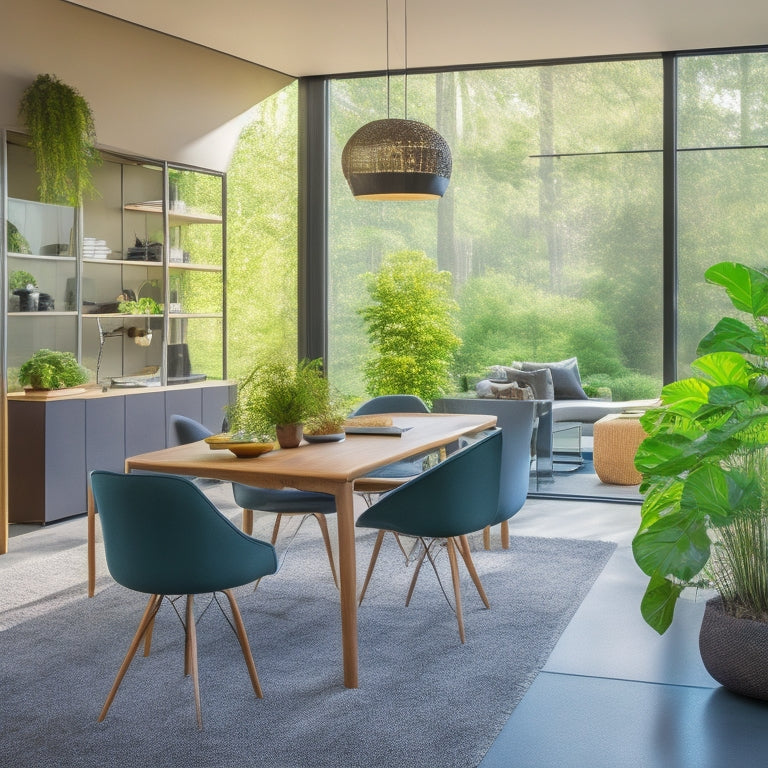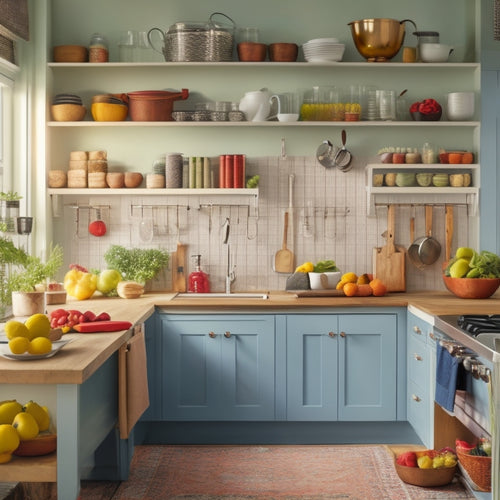
Homebuilders Revolutionize Homes With Workspaces
Share
Homebuilders are revolutionizing the concept of home design by incorporating dedicated workspaces that cater to the growing demand for flexible and functional living arrangements. This shift is driven by the pursuit of a harmonious work-life balance, with homeowners seeking tailored layouts to accommodate their specific needs. Builders are responding with innovative solutions, including repurposed spaces, outdoor home offices, and accessory dwelling units. As the demand for remote workspaces continues to rise, homebuilders are adapting with creative strategies and designs that prioritize flexibility, functionality, and comfort. The evolution of home design is poised to redefine the modern living experience, and there's more to explore.
Key Takeaways
• Homebuilders cater to the demand for dedicated workspaces by offering innovative solutions with tailored layouts and repurposing areas like laundry rooms.
• Builders prioritize flexibility, functionality, and adaptability in their designs, incorporating outdoor home offices and accessory dwelling units to enhance the living experience.
• Customized designs allow homeowners to establish personalized workspaces that boost productivity, organization, and work-life balance, adding significant value to their properties.
• The incorporation of dedicated workspaces has become a highly sought-after amenity in the real estate market, making homes more attractive to potential buyers.
• By responding to the demand for remote work arrangements, homebuilders revolutionize homes to support the evolving needs of homeowners and improve their overall quality of life.
Meeting Homeowner Demands
The modern homeowner's pursuit for a harmonious work-life equilibrium has sparked an urgent need for dedicated workspaces within the comfort of their own homes.
Builders are addressing this demand by offering innovative solutions that cater to individual needs. Tailored layouts are being crafted to accommodate specific requirements, ensuring that homeowners can establish a personalized workspace that enhances productivity.
Repurposing spaces, such as laundry rooms, pantries, or hallways, is becoming a popular trend, allowing homeowners to create a private workspace without sacrificing valuable square footage.
Evolving Design Trends
As the demand for dedicated workspaces continues to rise, homebuilders are responding with innovative design trends. These trends prioritize flexibility, functionality, and adaptability.
Versatile layouts and innovative designs are being incorporated into new homes, offering homeowners a range of options to suit their unique needs. Some builders are incorporating outdoor home offices, providing a serene and private workspace that seamlessly integrates with the natural environment.
Modern solutions, such as accessory dwelling units, are also becoming increasingly popular. These designs not only cater to the growing demand for remote workspaces but also add value to the home.
Builder Strategies and Solutions
Homebuilders are adopting innovative strategies to accommodate the growing demand for dedicated workspaces. They are reconfiguring existing spaces or adding new square footage to meet the evolving needs of homeowners.
To optimize space, builders are employing creative solutions. This includes repurposing areas from laundry rooms, pantries, or hallways. This approach enables homeowners to have functional layouts that cater to their work-from-home requirements.
Customized designs are also being offered, allowing homeowners to tailor their workspaces to suit their individual needs. By incorporating flexible and functional designs, homebuilders are providing homeowners with the perfect blend of space optimization and comfort. This ultimately enhances their overall living experience.
The Value of Home Offices
By incorporating dedicated workspaces into their homes, homeowners can significantly increase their property's value, making this feature a highly sought-after amenity in today's real estate market.
The value of a home office lies not only in its physical presence but also in the productivity benefits it provides. A well-designed home office can foster a sense of organization, reduce distractions, and promote a healthy work-life balance.
As a result, homeowners can reap the rewards of increased property value, making their homes more attractive to potential buyers. By investing in a dedicated workspace, homeowners can create a valuable asset that pays dividends in both personal and financial terms.
Remote Work Statistics
Statistics reveal that the shift towards remote work is more than just a pandemic-induced trend, with a staggering 86% of North American workers reporting high productivity while working from home. This trend is expected to continue post-pandemic, with nearly 80% of employers establishing or expanding work-from-home policies.
Analyzing productivity trends, it becomes clear that self-discipline, remote collaboration, and well-being are key factors for work-from-home success. Global Workplace Analytics emphasizes the importance of remote work, highlighting its potential to increase productivity and improve work-life balance.
As employer policies adapt to this new reality, homebuilders are responding by incorporating dedicated workspaces into their designs, catering to the growing demand for flexible and functional homes that support remote work arrangements.
Frequently Asked Questions
Can a Home Office Be Designed for Multiple Users With Different Needs?
'Kill two birds with one stone' by designing a collaborative workspace that caters to multiple users with different needs, incorporating ergonomic furniture and clever layout planning to maximize productivity and comfort for all.
How Do Homebuilders Ensure Adequate Lighting in Home Offices?
To guarantee adequate lighting in home offices, builders incorporate natural lighting through strategically placed windows and skylights, while also providing ergonomic furniture with adjustable lighting options, and offering privacy solutions and soundproofing options to minimize distractions.
Are There Specific Noise-Reduction Materials Used in Home Office Construction?
To minimize distractions, home office construction often incorporates soundproofing materials and acoustic panels to reduce ambient noise, while ergonomic furniture and flexible layouts promote comfort and productivity, enhancing the overall work-from-home experience.
Can Home Offices Be Designed to Accommodate Video Conferencing Equipment?
With 86% of North American workers reporting high productivity while working from home, designing home offices to accommodate video conferencing equipment is essential. A well-planned video conferencing setup, ergonomic design, soundproofing solutions, and customizable layouts are necessary for efficient remote collaboration.
Are Home Offices Typically Equipped With Advanced Technology and Security Features?
While some home offices may be equipped with advanced technology and security features, many prioritize ergonomic furniture and smart technology integration, such as voice-controlled lighting and temperature systems, to enhance productivity and comfort.
Related Posts
-

5 Best Kitchen Organization Templates With Shopping Lists
You're looking to transform your kitchen into a culinary haven with the help of organization templates and shopping l...
